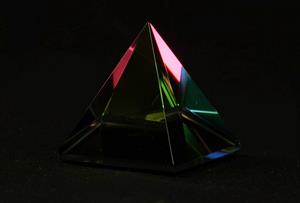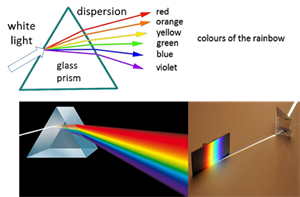
PUMPA - SMART LEARNING
எங்கள் ஆசிரியர்களுடன் 1-ஆன்-1 ஆலோசனை நேரத்தைப் பெறுங்கள். டாப்பர் ஆவதற்கு நாங்கள் பயிற்சி அளிப்போம்
Book Free Demo- Place a prism on a table and keep a white screen near it.

- Now, with the help of a torch, allow white light to pass through the prism. What do you see?
You can observe that white light splits into seven coloured light rays, namely, violet, indigo, blue, green, yellow, orange and red (VIBGYOR) on the screen.

Now, place another prism in its inverted position, between the first prism and the screen. Now, what do you observe on the screen?
You can observe that white light is coming out of the second prism.

In this activity, you can see that the first prism splits the white light into seven coloured light rays and the second prism recombines them into white light, again.
Thus, it is clear that white light consists of seven colours.
Thus, it is clear that white light consists of seven colours.
Splitting white light into its seven constituent colours (wavelength) on passing through a transparent medium is known as dispersion of light.
Reference:
https://pixabay.com/photos/glass-prism-color-technology-design-3781924/
https://commons.wikimedia.org/wiki/File:Dispersion_of_light.png
https://physics.stackexchange.com/questions/23401/can-anyone-explain-to-me-why-light-is-not-dispersed-into-a-spectrum-through-a-pa